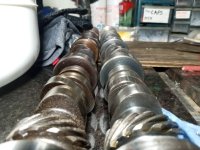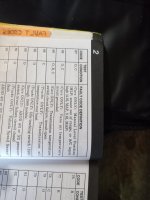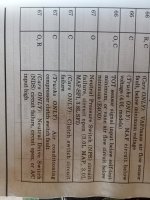Thanks asap, lol I needed shims after the cam and pushrods no doubt.
Forgive me for the long posts.
Well, as I'm getting my cart ready I get the meter out one more time to do a final test and things get wierd, and may have solved this case but it snowed earlier and was getting too dad gum cold outside as well as dark. Yes it snows in Texas. Am I beginning to sound like those women who share a recipe but you have to read they're whole life story to get to the recipe? I knew I shouldn't have taken those women's vitamins..........
I start jiggling wires while it's running around the iac and idle RPM jumps up and back down several times when I wiggle the wires?????
Again, check engine light went away, 34/67 remained but no light, unless the bulb just now burned out?
So I disconnected the negative battery cable, disconnect the 60 pin connector from the computer and disconnect the IAC.
Set my meter up to test resistance with audio so I can hear it beep and guess what. Of the 2 wires going to the IAC, first wire tests fine, second wire tests fine.......... until I look at where the second wire is going on the 60 pin, it's labeled inj 7. So I test inj 8 and it pings back to the IAC. In fact, all 8 injector grounds pinged back to the IAC? Btw I labeled a lot of wires going to the 60 pin.
Which is confusing....... The MAF kit has a separate independant harness for the injectors. One red wire and 8 black.
One red for soldering into 37/57.
8 black independent grounds for each cyl.
The only wire shared is the 12v run which shouldn't be ground?
Or does it ground when off? I'm confused.
And if it does ground, why didn't it ping back during any of the other sensor tests on the ground or hot side??????
I thought the IAC, EGR, TPS and purge shared the same ground? I'll need to look at the schematics.
I'll do further testing tomorrow if it warms up. It made sense for a second but as I thought about it, it should not be tied in with the IAC in any way, should it?
I put everything back together, fire it up, purs like a kitten, no check engine light, drive 15 miles very hard, no check engine light. Get home, put it in park, idle hangs at 1100 RPM. Here we go again, cam would be swapped but I did see things run flawless for several days with no air adjuster needed, no codes, just like day's of old, so I know it's possible.




